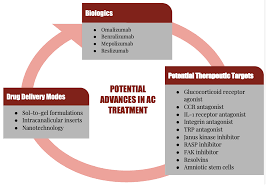FNP NR511 Week 3 Case Study Part 2
FNP NR511 Week 3 Case Study Part 2
Patient with bilateral eye discomfort.
Patient information:
A 19-year-old male
Subjective.
CC (chief complaint): Bilateral eye discomfort.
HPI (history of present illness): The patient is a 19-year-old male who presents with complaints of eye discomfort. The patient reports that this discomfort started 2-3 days ago. He reports that both eyes are affected and characterizes the discomfort as constant. He describes it further by saying that the eyes feel ‘gritty’. He goes on to describe the gritty sensation as feeling as if sand is caught in between the eyes. He reports no aggravating or relieving factors.
The patient took OTC visine drops once yesterday and he says that this improved the redness temporarily. There were however no changes with the gritty sensation, tearing and itching. The patient describes the severity of discomfort on a pain scale of 2/10. The patient reports that he has never experienced these symptoms before.
Current Medications: Visine OTC once yesterday.
Allergies: no known allergies
PMH: Seasonal allergic rhinitis. This is well controlled on fluticasone nasal spray daily and Loratadine 10mg daily. He only takes these medications during the spring months when nasal allergies flare.
FH: unavailable. Patient is adopted
SH : A freshman at the University of Awesome. Does not use tobacco. Drinks 3-6 beers per weekend. Uses recreational marijuana. FNP NR511 Week 3 Case Study Part 2
ROS
GENERAL: The patient has no constitutional symptoms like fever or chills.
HEENT:
Head: Atraumatic, normocephalic.
Eyes: Does not use contact lenses or glasses. No visual changes. Negative for eye injury, or trauma. No dryness. No crusting of lids. No mucoid or purulent drainage. Has bilateral symptoms of itchiness, tearing, and redness of the eyes. Has FB sensation in the eyes. FNP NR511 Week 3 Case Study Part 2
Ears: No otalgia. No otorrhea.
Nose: positive for runny nose. Positive for nasal congestion. Negative for sneezing,
Throat: No ST and redness.
CARDIOVASCULAR: no chest pain
RESPIRATORY: No cough, SOB and wheezing
NEUROLOGICAL: patient is alert and oriented.
LYMPHATICS: No lymphadenopathy.
Objective. FNP NR511 Week 3 Case Study Part 2
Physical exam:
Vitals: Temperature is 97.9. Pulse is 68 bpm. Respiratory rate is 16 breathes per minute. BP is 120/75, Weight 195 pounds, Height 6\’0,
General: A young adult male in NAD. He is alert, oriented, and cooperative.
HEENT:
Head: Atraumatic, normocephalic.
Eyes: PERRL with white sclera bilaterally. Slight bilateral photophobia. Visual Acuity 20/20 (uncorrected) OU. Positive for bilateral conjunctival redness and tearing. Negative for mucoid or purulent drainage. No crusting of lids. No masses or lesions on lids. No visible foreign bodies under lids or on cornea.
Fundoscopic examination: retina is normal. No retinal hemorrhages.
Ears: gray and intact tympanic membranes. Pinna and tragus nontender.
Nose: Nares are patent. Pale and boggy nasal turbinates. Nasal mucosa has thin clear secretions.
Throat: Moist oropharynx, no lesions or exudate. Signs of tonsillar hypertrophy with tonsils ¼ bilaterally.
RESPIRATORY: Lungs fields clear bilaterally. No difficulty in breathing
CARDIOVASCULAR: S1 and S2 heard. No murmurs.
NECK: Supple. Thyroid midline, small, and firm with no palpable masses.
LYMPHATICS: No signs of lymphadenopathy.
FNP NR511 Week 3 Case Study Part 2 Assessment.
Differential diagnosis: based on the symptoms and physical exam findings, the differential diagnoses are:

- Allergic conjunctivitis. This is an inflammation of the conjunctiva due to an allergic reaction. The same allergens that usually trigger allergic rhinitis can also trigger allergic conjunctivitis. This is because the conjunctiva is a mucosal surface. The patient has a positive history of allergic rhinitis and it is therefore possible that the same allergens responsible for allergic rhinitis could have caused the allergic conjunctivitis. The patient’s symptoms also support this diagnosis. He presents with bilateral itching of the eyes, redness, discomfort, and tearing of the eyes. These are definitive symptoms of allergic rhinitis. Allergic reactions rarely occur without itchiness and lack of itchiness makes a diagnosis of allergic conjunctivitis suspect (Bielory et al., 2020 FNP NR511 Week 3 Case Study Part 2). Physical examination of the eyes elicits a slight sensitivity to light. This is also a common finding in allergic conjunctivitis.
- Allergic rhinitis. Allergic rhinitis usually involves the inflammation of nasal membranes. Allergic rhinitis is also strongly linked to the inflammation of the conjunctiva. It is an atopic disease that occurs as a result of an inflammatory process triggered by an allergen. The defining symptoms of allergic rhinitis are rhinorrhea, itchiness of the eyes, nose and palate, nasal congestion and postnasal drip (Gardiner, 2018 FNP NR511 Week 3 Case Study Part 2). The patient presents with majority of these symptoms. Physical examination reveals that the nasal turbinates are pale and boggy with mild to moderate swelling. This is a typical sign of allergic rhinitis.
- Viral conjunctivitis, also known as pink eye. This is a common condition that is usually caused by viral infection of the eyes. The common signs associated with the disease is itchiness of the eyes, tearing, redness of the eyes, discharge and light sensitivity (Yeu & Hauswirth, 2020). Light sensitivity usually indicates corneal involvement. The presence of these symptoms in this patient supports this diagnosis.
Diagnostic tests:
- Complete blood count (CBC): to rule out infections and check the eosinophil count
- In vitro allergy testing to determine the amount of specific IgE.
- Allergy skin test
FNP NR511 Week 3 Case Study Part 2 References
- Bielory, L., Delgado, L., Katelaris, C. H., Leonardi, A., Rosario, N., & Vichyanoud, P. (2020). ICON: diagnosis and management of allergic conjunctivitis. Annals of Allergy, Asthma & Immunology, 124(2), 118-134. https://doi.org/10.1016/j.anai.2019.11.014
- Gardiner, Q. (2018). Allergic rhinitis. Scott-Brown’s Otorhinolaryngology Head and Neck Surgery, 999-1010. http://dx.doi.org/10.1201/9780203731031-92
- Yeu, E., & Hauswirth, S. (2020). A Review of the Differential Diagnosis of Acute Infectious Conjunctivitis: Implications for Treatment and Management. Clinical Ophthalmology (Auckland, N.Z.), 14, 805–813. https://doi.org/10.2147/OPTH.S236571
